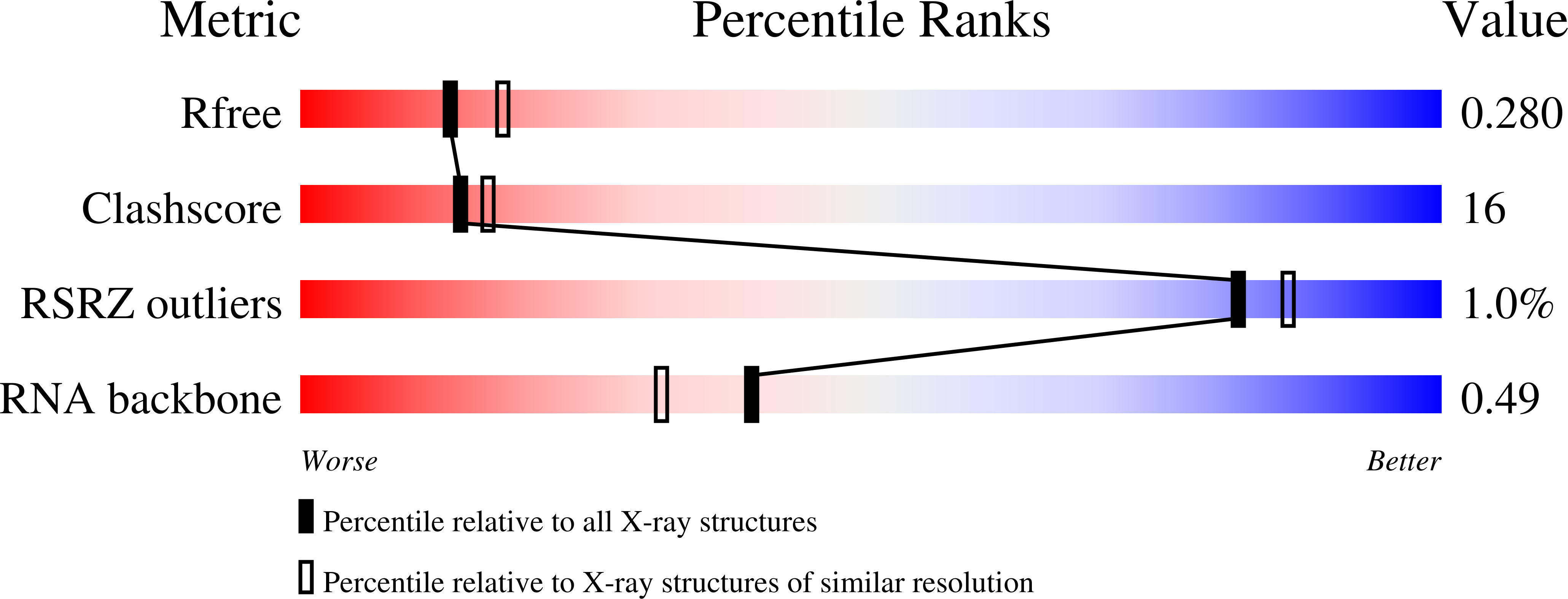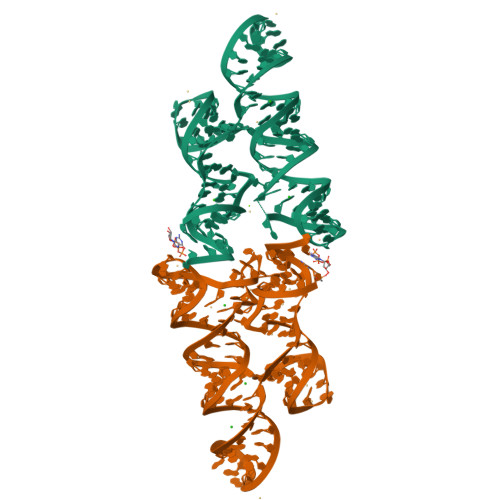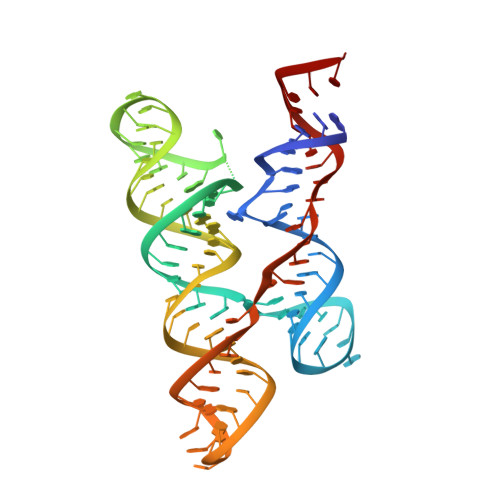Convergent Use of Heptacoordination for Cation Selectivity by RNA and Protein Metalloregulators.
Bachas, S.T., Ferre-D'Amare, A.R.(2018) Cell Chem Biol 25: 962
- PubMed: 29805037
- DOI: https://doi.org/10.1016/j.chembiol.2018.04.016
- Primary Citation of Related Structures:
6CB3, 6CC1, 6CC3 - PubMed Abstract:
The large yybP-ykoY family of bacterial riboswitches is broadly distributed phylogenetically. Previously, these gene-regulatory RNAs were proposed to respond to Mn 2+ . X-ray crystallography revealed a binuclear cation-binding pocket. This comprises one hexacoordinate site, with six oxygen ligands, which preorganizes the second, with five oxygen and one nitrogen ligands. The relatively soft nitrogen ligand was proposed to confer affinity for Mn 2+ , but how this excludes other soft cations remained enigmatic. By subjecting representative yybP-ykoY riboswitches to diverse cations in vitro, we now find that these RNAs exhibit limited transition metal ion selectivity. Among the cations tested, Cd 2+ and Mn 2+ bind most tightly, and comparison of three new Cd 2+ -bound crystal structures suggests that these riboswitches achieve selectivity by enforcing heptacoordination (favored by high-spin Cd 2+ and Mn 2+ , but otherwise uncommon) in the softer site. Remarkably, the Cd 2+ - and Mn 2+ -selective bacterial transcription factor MntR also uses heptacoordination within a binuclear site to achieve selectivity.
Organizational Affiliation:
Biochemistry and Biophysics Center, National Heart, Lung and Blood Institute, Bethesda, MD 20892, USA.






















